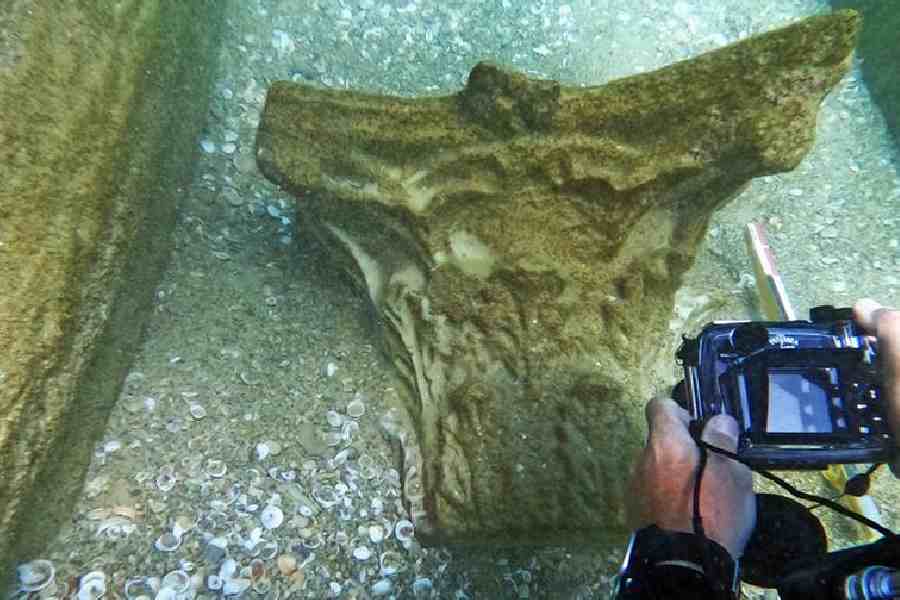The Israel Antiquities Authority has announced the discovery of a ship's cargo that includes 1,800-year-old Roman period marble architectural columns.
The find was originally made a few weeks ago by ocean swimmer Gideon Harris, who had contacted the Israel Antiquities Authority after seeing ancient columns off Beit Yanai beach — 6 km (3.7 miles) north of the city of Netanya between Haifa and Tel Aviv on the Mediterranean coast.
"We have been aware of the existence of this shipwrecked cargo for a long time,” Koby Sharvit, director of the underwater archaeology unit at the Israel Antiquities Authority, said in a statement.
"But we didn't know its exact whereabouts as it was covered over by sand, and we could therefore could not investigate it. The recent storms must have exposed the cargo, and thanks to Gideon's important report, we have been able to register its location, and carry out preliminary archaeological investigations."
Comprising a set of ornate and partially carved Corinthian capitals — which adorn Greco-Roman columns from the period — and expansive marble architraves up to 6 meters long, the find is regarded as the oldest ocean cargo of its kind in the Eastern Mediterranean.
Genuine marble artifacts resolve age-old archaeological debate
Archaeologists believe the ancient architectural elements were shipped to potentially be used on a public building, a temple or a theater.
"These fine pieces are characteristic of large-scale, majestic public buildings," said Sharvit.
The almost 1800-year-old cargo from the Roman period probably originated in the Aegean, the Black Sea, Turkey or Greece and was likely destined for one of the ports on the southern Levant coast, such as Ashkelon, Gaza or possibly Alexandria in Egypt.
While similar architectural objects were often made of local stone and covered with white plaster in the similar Roman period, Sharvit confirmed the underwater treasures were made of "genuine marble."
Moreover, the finding settles a debate among land and sea archaeologists as to whether Roman period architectural elements were wholly finished before leaving the quarry site, or were fashioned into their final form on the construction site. The unfinished columns that were likely bound for the southern Levant indicate that local artisans were probably on hand at their destination to complete the job.











